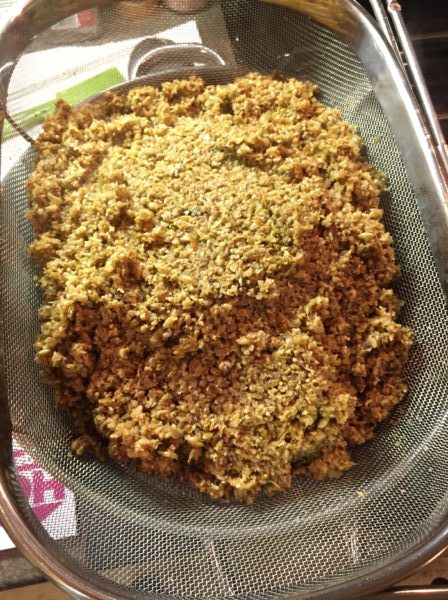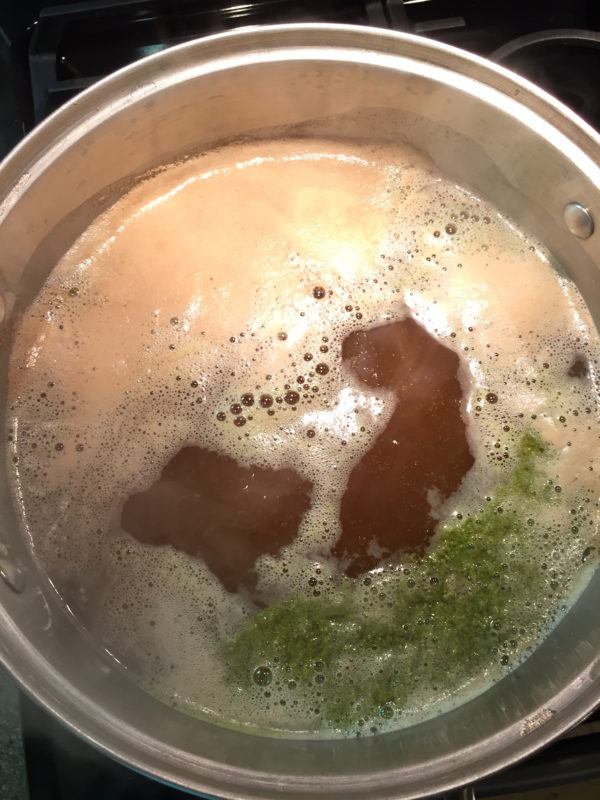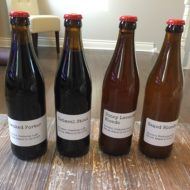The second beer in the epic garden series of two. I really think this purple flowery thing is lavender. It smells like an old lady’s closet and it sort of tastes like soap (yes I ate some, a sin for any chemist). Next obvious step is to add it to a beer and see what happens! I opted to go with a more traditional Belgian Blonde recipe rather than continue my recent penchant for brewing with Simpsons Golden Naked Oats (see posts on naked smoked porter and very naked rosehip blonde ale). Don’t worry, I found a new “it” grain to overuse. After much debate on how to effectively balance the lavender flavour, I stumbled upon honey malt. According to Google everyone should use it and it adds a more professional complexity to your home brews. Challenge accepted (ie. I know I will screw this up somehow).
I did debate adding citrus rather than going with a sweeter flavour profile. I “think” lemon zest at flameout or maybe after fermentation might enhance the lavender without making the beer taste like those faintly candy shaped, 90’s, decorative soaps that every family had in a fancy basket in the bathroom (and NOW we worry about kids eating laundry detergent pods, seriously). Oh well, the lavender plant is fairly large so plenty left over to experiment with later (lavender plants get big and bushy right? Right…?).
Now the fun bit: crank up the alcohol content! I’m using leftover supposed-to-be-clear-but-my-cats-were-being-cute-so-now-it’s-amber Belgian style candi sugar from the rosehip blonde ale. I plan to write a post on how to make your own inverted candi sugar without special gadgets next week. It might happen. I also decided to squirt a liberal amount of honey out of a small bear’s head to hopefully boost the honey malt flavour.
| Servings |
gallon
|
- 1.8 pounds Weyermann Pilsner Malt (816 g)
- 0.3 pounds Honey malt (136 g)
- 0.2 pounds Carapils (90 g)
- 2.37 litres Water
- 3.8 litres Water
- 0.25 oz Easy Kent Golding (7 g)
- 2 tbsp Organic honey
- 1/2 packet Safbrew S-33
- 1 tbsp Lavender (dried)
Ingredients
Mash
Sparge
Boil
Fermentation
|
|
- Heat water to 160 F
- Add milled grains
- Steep for 60 minutes at 144-152 F
- Hot break at 170 F after 60 minutes
- Heat water to 170 F
- Filter water through mash

- Boil for 60 minutes
- 0 minutes add 4/5 of the East Kent Golding hops

- 55 minutes add 1/5 East Kent Golding hops
- At flame-out add honey and dissolve
Cold Break
Instead of ice, I cool my brew pot by dunking it in a sink full of cold water and ice packs from my mom (who is paranoid about food safety and travelling with food) and the local sports injury clinic.
Fermentation
After the beer has cooled, add filtered beer plus 1/2 packet of yeast to carboy and shake vigorously.
Add pasteurized lavender on day 5. Lavender must be pasteurized to eliminate bacteria and wild yeast (it was from outside! a scary place full of scary things, like random yeast floaties). I achieved this by soaking the dried lavender in boiling water (just enough to cover) and covering with sanitized plastic wrap. I allowed the mixture to cool before adding to the carboy.

There is much debate about how to add lavender without releasing funky tasting oils, or infecting your brew with bacteria or wild yeast (worst stripper name ever?). I decided to allow the beer to ferment for about a week and then made a tea out of a tablespoon of dried lavender and a quarter cup of hot water. In theory, the lavender won’t boil and release oils, and the scalding hot water will kill any nasties. Maybe it worked?
